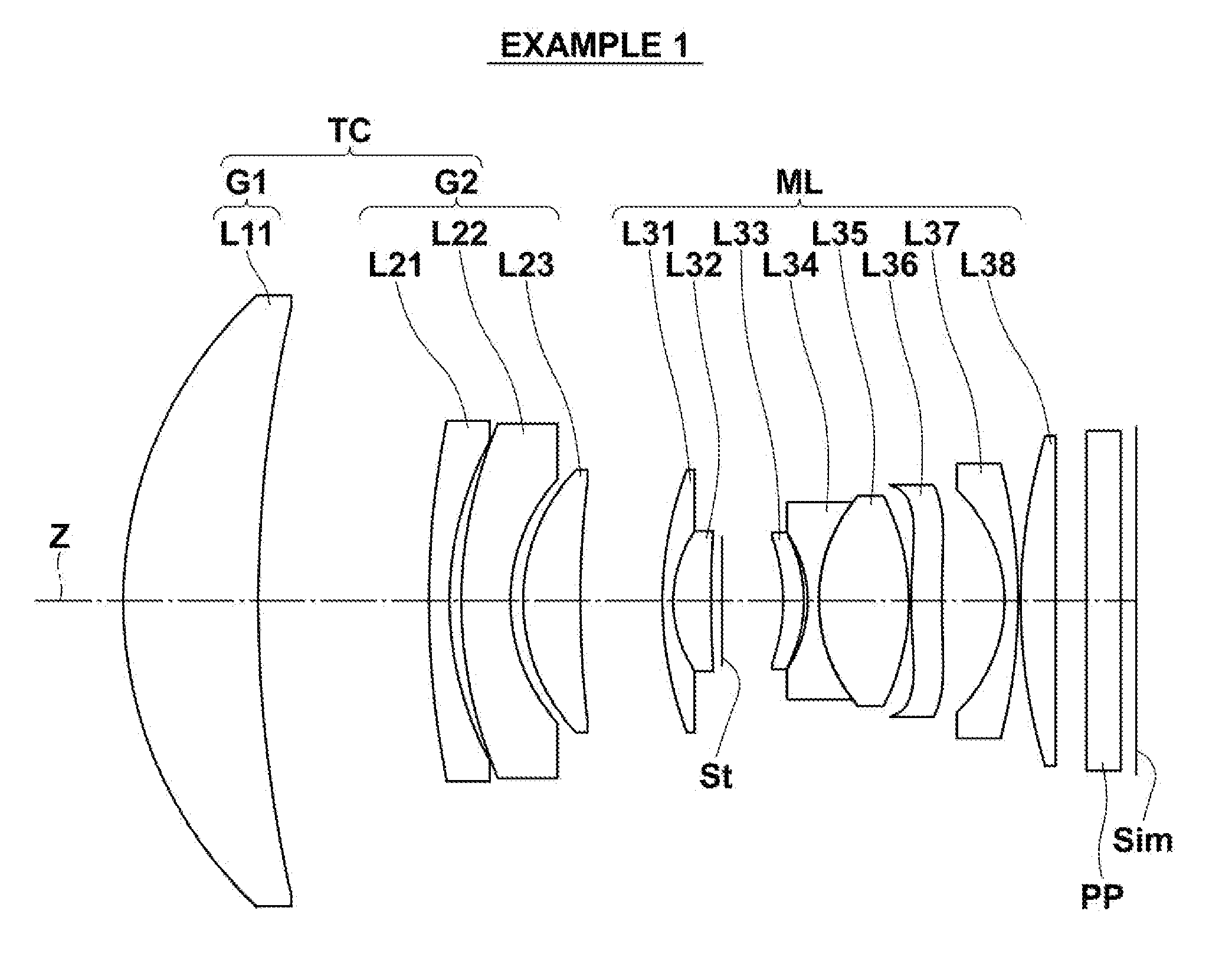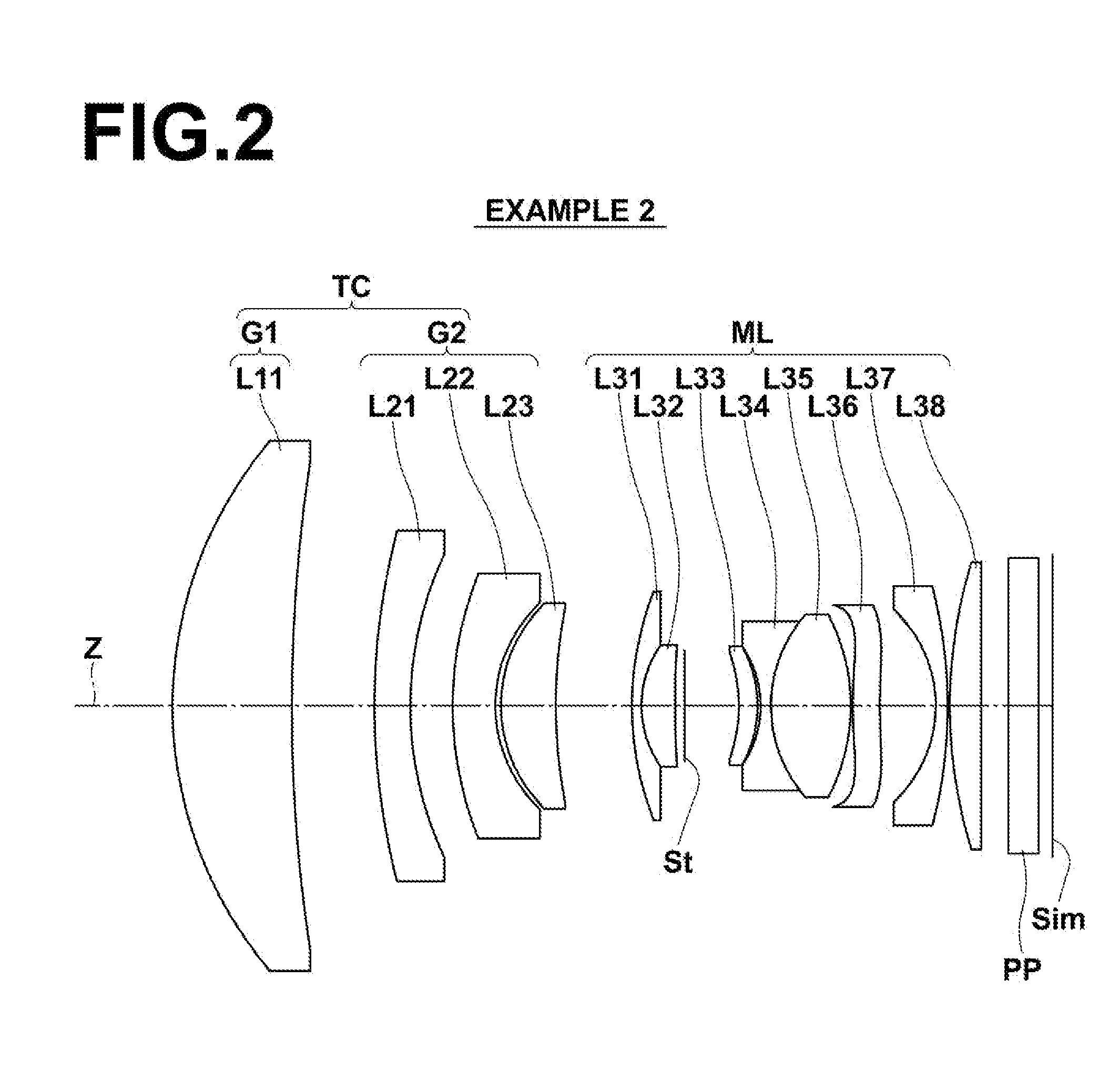Teleconverter lens and imaging apparatus
a technology of teleconverter lens and imaging apparatus, which is applied in the direction of optics, optical elements, instruments, etc., can solve the problems of disadvantages of using a plurality of lenses in view of both weight and cost, and achieve the effect of high image quality and sufficient optical performan
- Summary
- Abstract
- Description
- Claims
- Application Information
AI Technical Summary
Benefits of technology
Problems solved by technology
Method used
Image
Examples
Embodiment Construction
[0035]Hereinafter, embodiments of the present invention will be described in detail with reference to the drawings. FIG. 1 is a sectional view illustrating the lens configuration of a teleconverter lens according to one embodiment of the invention. The configuration example shown in FIG. 1 is the same as the configuration of a teleconverter lens of Example 1, which will be described later. In FIG. 1, the left side is the object side and the right side is the image side. FIG. 1 also shows an example of a master lens that is combined with the teleconverter lens of this embodiment.
[0036]As shown in FIG. 1, the teleconverter lens TC is attached to the object side of the master lens ML, and consists essentially of, in order from the object side along the optical axis Z, a front group G1 having a positive refractive power, and a rear group G2 having a negative refractive power, wherein the front group G1 and the rear group G2 are separated from each other by the widest air space, the fron...
PUM
 Login to View More
Login to View More Abstract
Description
Claims
Application Information
 Login to View More
Login to View More - R&D
- Intellectual Property
- Life Sciences
- Materials
- Tech Scout
- Unparalleled Data Quality
- Higher Quality Content
- 60% Fewer Hallucinations
Browse by: Latest US Patents, China's latest patents, Technical Efficacy Thesaurus, Application Domain, Technology Topic, Popular Technical Reports.
© 2025 PatSnap. All rights reserved.Legal|Privacy policy|Modern Slavery Act Transparency Statement|Sitemap|About US| Contact US: help@patsnap.com



